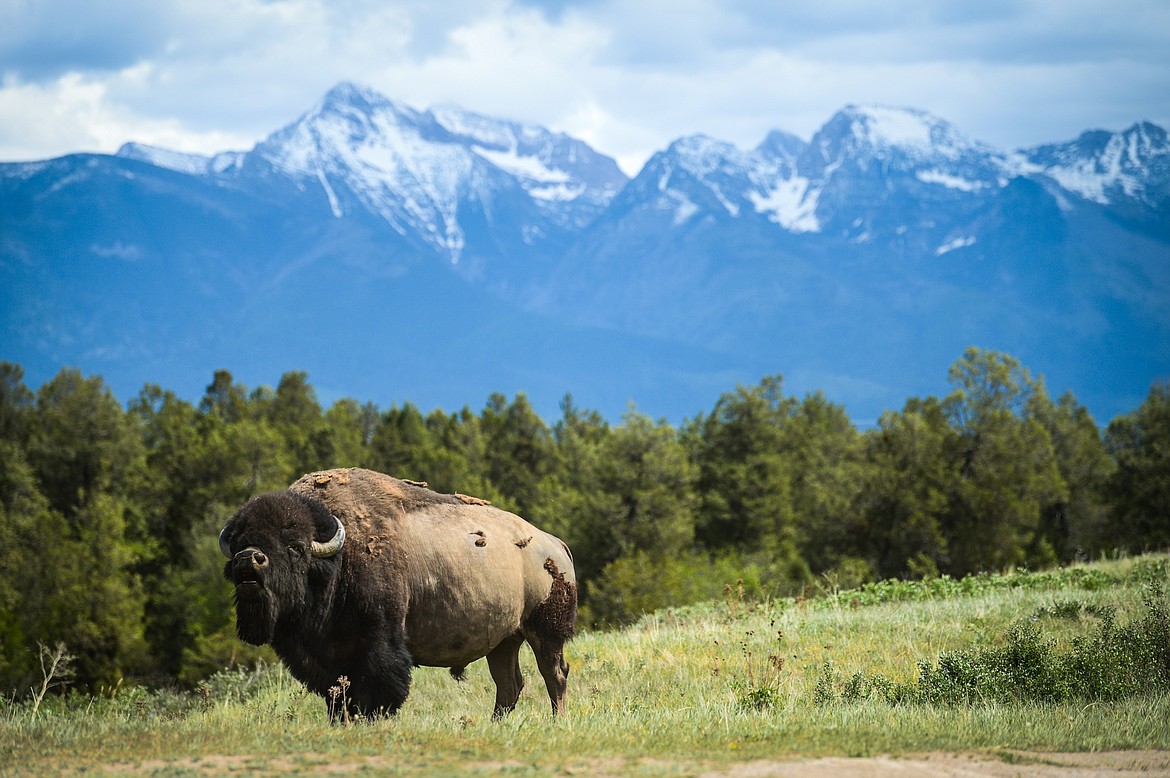Implications of allowing bison to graze public lands
Montana Cattlemen’s Association | Daily Inter-Lake | UPDATED 2 years, 6 months AGO
The Montana Cattlemen’s Association is disappointed in the Bureau of Land Management’s (BLM) decision to authorize the American Prairie Reserve to use 63,065 acres of public lands in Phillips County for bison.
In reaching this decision, a number of important issues have been overlooked or completely ignored. This unprofessional failure on the part of BLM to consider all the implications of allowing bison to graze public lands is disturbing.
Among the issues ignored are public safety, where BLM contends that bison “…will not measurably contribute to public health and safety due to the limited potential for close, direct bison encounters with people.” The entire purpose of the BLM policy of “multiple use” is to allow access to everyone who wishes to hike and hunt. If bison are on BLM lands, members of the public will inevitably attempt to view them up close, and potentially be in danger.
In addition, no consideration has been given to the neighboring ranchers, who will need to deal with stray bison. Most certainly these ranchers will be put into dangerous situations because BLM only requires that APR maintain fences that meet the minimum state standard designed for cattle. Clearly, these fences will not interrupt the bison if they are tempted by greener grass or intend to visit cows in heat across the fence. Then too, who will have to fix the fences the bison breach?
In order to support their decision, BLM makes unsupported claims about the beneficial impact of bison on the rangelands as in contrast to grazing by cattle. BLM presents no scientific evidence for this contention. The observation by many is that bison and cattle have nearly identical habits and needs in both grazing patterns and use of water sources. Bison’s alleged ability to improve rangeland conditions fits more in the realm of “urban myth” than as an established scientific fact.
Nor does BLM present evidence that there is a need for remedial grazing by bison on the allotments in question. In fact, in the original environmental assessment BLM admits that there are no outstanding range issues that require improvement and that all wildlife goals are being met. This is after decades of use by cattle. For BLM to then conclude that magically bison will make it better puts BLM’s professionalism in question.
BLM further contends that the removal and modification of fences will improve big game and sage grouse habitat. But as already mentioned, in the earlier Environmental Assessment BLM stated that there are no issues with any of the wildlife. Therefore, the existing fences must be adequate for wildlife movements. The fences that BLM authorizes to be removed or replaced with electric fencing are public property. ow can BLM simply decide to sanction the destruction of public property, costing in the hundreds of thousands of dollars, with no due process, and on just the notion that it will benefit wildlife?
Finally, and perhaps most damaging of all, BLM in acquiescing to changes in grazing periods for hundreds of head of bison by allowing turnout on the first of April, and in some allotments allowing year-round grazing, is putting decades of range management efforts at risk. And they do so without one word as to the potential adverse impact on the rangeland vegetation. BLM’s entire purpose is to manage rangelands in a scientific manner to protect and maintain those public resources in the best condition possible for all users of public lands. Shouldn’t a dramatic change in policy to allow grazing before grasses are able to establish in the spring merit some sort of mention as to the potential impact?
As stated above, the Montana Cattlemen’s Association is very disappointed in this decision by BLM. For the most part, BLM has been a trustworthy partner in managing public lands for the benefit of recreationalists, hunters, and ranchers. This unprofessional decision can only erode the trust that has been earned by the Bureau of Land Management. Bison are not cattle and cannot be controlled by fences designed to be adequate for cattle. BLM must make it clear that the APR will be held to a higher standard in the management of their bison herd.
Montana Cattlemen’s Association to address the market interests of Montana cattle producers.

